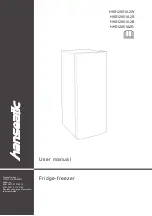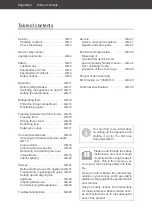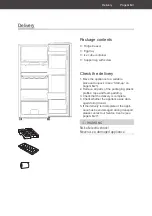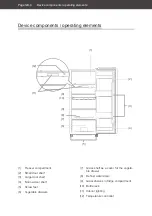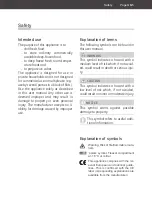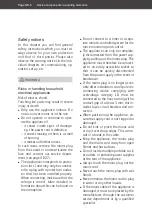
WARNING
Danger of explosion!
Improper handling of the appliance
may lead to an explosion.
■
Do not store explosive substances or
spray cans with fl ammable propel-
lants inside the appliance, as they
may cause ignitable gas-air mixtures
to explode.
CAUTION
Health hazard!
Incorrect handling, insuffi cient cool-
ing or overlapping items can spoil the
stored food. This could lead to a risk of
food poisoning when consumed!
■
In particular, pack raw meat and fi sh
carefully to ensure that adjacent
food cannot be contaminated by sal-
monella or similar bacteria.
■
Abide by the storage times recom-
mended by food manufacturers.
■
Note that the shelf life of the frozen
food may be shortened due to a rise
in the temperature inside the appli-
ance (from defrosting, cleaning or
power failure).
■
In case of prolonged power failure
or appliance malfunction, remove
stored frozen food from the appli-
ance and store it in a suffi ciently cool
place or in another refrigerating ap-
pliance (maximum storage time in
case of malfunction: 15 hours).
■
After a malfunction, check wheth-
er the stored food is still edible. Con-
sume thawed and defrosted foods
immediately; do not refreeze.
Risk of injury!
Improper handling of the appliance
may result in injury. Risk of burns caused
by low temperatures.
■
The food and the inside walls of the
freezer compartment have a very low
temperature. Never touch them with
wet hands. This can cause injury to
the skin. Skin damage can occur even
with dry skin.
■
Let ice cubes or ice lollies thaw a lit-
tle before eating, do not put into your
mouth straight from the freezer com-
partment.
Freezing food
Freezing means reducing the core tempera-
ture of fresh, room-temperature food to fro-
zen as quickly as possible – for best results,
“flash-frozen”. If not cooled quickly enough,
the food will be ‘killed by frost’, i.e. the struc-
ture will be destroyed. A constant storage
temperature of -18° C is needed to maintain
the food’s consistency, taste and nutritional
value.
Preparing the food
• Only freeze high quality food.
• Freeze fresh and prepared food dry and
unseasoned. Unsalted foods are more
durable.
• Allow prepared food to cool before freez-
ing. This not only saves power, but also
prevents excessive frost formation in the
freezer compartment.
• Carbonated drinks are not suitable for
freezing because the carbon dioxide es-
capes during freezing.
Freezing foods/storing frozen foods
Freezing foods/storing frozen foods
Page GB-15

